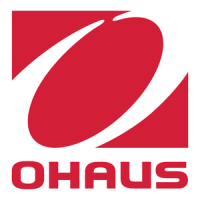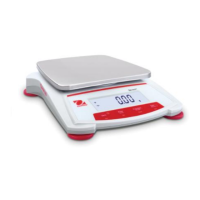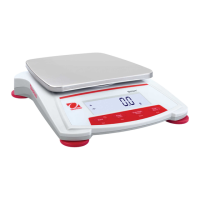What to do if OHAUS Scout SJX Scales show Err 8.3?
- JJulian KnightAug 16, 2025
If the OHAUS Scales display the error message Err 8.3, this indicates an overload condition. The weight on the scale exceeds its rated capacity.
What to do if OHAUS Scout SJX Scales show Err 8.3?
If the OHAUS Scales display the error message Err 8.3, this indicates an overload condition. The weight on the scale exceeds its rated capacity.
What does Err 8.4 mean on OHAUS Scout SJX Scales?
If the OHAUS Scales display the error message Err 8.4, this indicates an underload condition, meaning the pan has been removed.
What does Err 8.1 mean on OHAUS Scout SJX Scales?
If the OHAUS Scales display the error message Err 8.1, it means the weight exceeds the power-on zero range.
What does Err 8.2 mean on OHAUS Scout SJX Scales?
If the OHAUS Scales display the error message Err 8.2, it means the weight is below the power-on zero range.
What does Err 8.5 mean on OHAUS Scout SJX?
If the OHAUS Scales display the error message Err 8.5, it indicates that the tare is out of range.
What does ref.err mean on OHAUS Scout SJX Scales?
If the OHAUS Scales display the error message ref.err, it means there is a parts counting or percentage error because the sample weight is less than 1d. The balance shows an error and then exits parts counting or goes to [Clr.APU].
What does Err 8.6 mean on OHAUS Scout SJX Scales?
If the OHAUS Scales display the error message Err 8.6, it indicates that the displayed value exceeds 999999, which is possible in Totalization mode.
What does Err 8.7 mean on OHAUS Scales?
If the OHAUS Scales display the error message Err 8.7, it indicates an unknown internal weight position.
What does Lo.ref mean on OHAUS Scales?
If the OHAUS Scales display the error message Lo.ref, it means that the Percent Reference weight or APW is too low for accurate results.
What does USB.Err mean on OHAUS Scales?
If the OHAUS Scales display the error message USB.Err, it means that the menu or app file cannot be found in the U-disk.
Explains signal words and symbols used for safety in the manual.
Lists essential safety guidelines to follow before installing, connecting, or servicing the equipment.
Instructions for assembling the balance with its various components.
Guidance on choosing an optimal environment for balance placement and operation.
Details on how to ensure the balance is level for accurate weighing using the indicator.
Instructions for connecting the AC adapter for power supply.
Steps for calibrating the balance upon installation or relocation for accuracy.
Overview of the balance's control panel and button functions.
Procedure for powering the balance on and off.
Detailed steps for performing internal and external span calibration procedures.
Instructions for using the balance in its default weighing mode.
Guide on how to use the balance for counting items based on reference weight.
How to measure a sample's weight as a percentage of a reference weight.
Instructions for comparing weights against target ranges (positive, negative, zero checks).
Method to store and accumulate a series of weight measurements.
Procedure for calculating specific gravity using a density kit.
How to capture and store stable weight values (Peak Hold or Display Hold).
Overview of how to navigate through the balance's menu system.
Accessing calibration options like internal, automatic, span, and linearity.
Configuring balance parameters such as reset, filter, backlight, and auto-tare.
Activating specific operating modes (Weighing, Counting, etc.) for use with the Mode button.
Enabling and selecting available weighing units for display and use.
Information on features like the weigh below hook and interface connectivity.
Guidelines for safely cleaning the balance housing and control panel.
Common problems, their causes, and remedies for balance issues.
How to contact OHAUS for service or technical support when issues persist.
List of available accessories and their corresponding item numbers.
Detailed technical specifications including capacity, readability, and dimensions for various models.
Diagrams showing balance dimensions and mounting points.
Information regarding compliance with various safety and regulatory standards.











